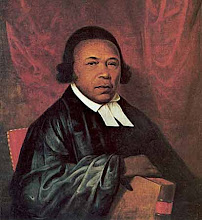I Wonder Why?
This column answers interesting questions.
Ever wonder why parishioners do certain things when they enter church and during the service?
1. Praying. Medieval Christians knelt through most of the service because penitence was so strongly emphasized, and the service conducted in Latin which few understood. But the first Christians spent much more time on their feet because praise was their primary focus. So today, as we attempt to find a better balance between penitence and praise, we are moving back toward the behavior patterns of the early church, kneeling less and standing more. page 28
2. Standing. Standing is the posture that expresses honor and praise. We stand when the Gospel is read and when a procession of clergy and others come into the church to begin the service. We also stand when the Creed is recited. It is equally natural to stand for hymns, because most of them are expressions of faith and praise. page 29
3. Gestures. Some Episcopalians bow their heads when a processional cross is carried by or when they hear the name of Jesus in a prayer or in a hymn. Church members also commonly bow to the cross before entering their pews or when passing in front of the alter. Others genuflect (kneel briefly on one knee) at such times. Such behavior is very biblical: St. Paul wrote that "at the name of Jesus every knee should bend" (Philippians 2:10). page 30
4. Sign of the Cross. To trace the cross on yourself by moving your hand from your head to your heart, and then from your left shoulder to the right, is a way of making a physical response to the end of the Creed (sealing the Creed to ourselves with the cross), and to the absolution and blessing. It's a way of taking that benediction to ourselves, saying "Amen" to it in an outward way. page 30
5. Upraised Hands. Praying or singing with an upraised hand or hands is another gesture often seen in Episcopal services. The holding up of hands in prayer can be seen in ancient frescos depicting Christians at worship. In fact, in one of his letters St. Paul speaks of "lifting up holy hands" in prayer (1 Timothy 2:8). The gesture is very similar to that used by many priests as they preside at the Eucharist and seems to be a natural way for lay people to express their own priesthood. pages 30 &31
Source:Welcome to Sunday: an Introduction to Worship in the Episcopal Church by Christopher L. Webber.

No comments:
Post a Comment